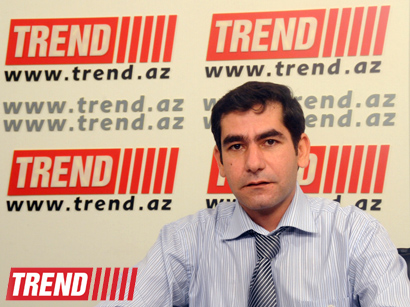Dalga Khatinoglu, Trend Iran News Service, department chief/
The eight Iranian presidential candidates have unanimously criticized the current economic situation and President Ahmadinejad's administrative policies over the past eight years. They have claimed that they will pull the country out of runaway inflation, recession, unemployment, and currency devaluation.
But, despite all the criticisms about Ahmadinejad's economic policies, the candidates have not yet given even general outlines of their economic programs.
As the West intensifies sanctions against Iran, introducing outlook plans for restoring Iran's economy seems impossible. Although the sanctions have not changed the Ahmadinejad administration's approach, they have affected lives of a majority of Iranian people. Of course, there are pragmatic candidates who are optimistic about seeing positive results in the future.
The legacy of Ahmadinejad's administration
Saeed Jalili seems to be the flag bearer of the ruling system. The administration of President Ahmadinejad earned $1.2 trillion during the past eight years, half of which was gained as oil revenues. Jalili says a revolution should happen in economy.
The Supreme Audit Court has reported that Ahmadinejad's administration has violated 50 to 70 percent of the Budget Act requirements since the second year of incumbency by March 19, 2011 each year. The current government has left an inflation rate of above 31 percent, a four-fold devaluation of the national currency since 2005, some three million unemployed , an economic contraction rate of 1.9 percent, and tough sanctions for its successor. The Supreme Audit Court has not published last solar year's report. But, considering a 40 percent decline in oil incomes, it is expected that more violations of law have been happened.
Jalili has not explicitly explained the method of economic revolution. He has just referred to the Supreme Leader's guidelines to promote "resistance economy".
Unemployment
Mohammad-Reza Aref is the most reformist candidate. He claimed that he would create one million jobs annually, but he did not explain how. Creating one million jobs requires an economic growth rate of aboout 8 percent.
Meanwhile, Iranian Industry and Mine director Hadi Ghanimifard said on June 8 that over 40 percent of production units in the country have been closed down. Based on the current year's budget law, some 1.3 million barrels of crude oil should be exported per day. But, Reuters has said that Iran exported some 700,000 barrels of crude last month.
The Iranian government gains half of its projected income and 80 percent of its projected export revenues through selling crude oil and oil products.
Rial devaluation and high inflation
The presidential candidates have claimed they will curb the national currency, rial, devaluation. This is while many Iranians have changed their capital into dollars. In October 2012, the Majlis Economic Committee's vice chairman Mohammad-Reza Pourebrahimi told Fars that some $18 billion are being held by people. The figure equals 30 percent of Iran's total foreign currency reserve. Iran holds $100 billion reserves overseas as well, but the money has been blocked as a result of sanctions.
Jalili has said that he will set the US dollar price at 25,000 rials. But, the fact is that the free market, not the government, determines the national currency's exchange rates against foreign currencies, unless a large amount of US dollar is injected in the market in order to balance supply and demand.
Considering that the central bank of Iran is facing a shortage of dollars and that many Iranians are hoarding US dollars at home, it seems to be impossible to rein in rising inflation and halt currency devaluation. Moreover, the US added the Iranian rial to list of sanctions last week.
Economic growth outlook
Tehran mayor Mohammad-Baqer Qalibaf, who is among the eight presidential candidates, has pledged to fix Iran's economic problems within two years. The International Monetary Fund has forecasted a 1.3 percent contraction for the economy in 2013 and 1.1 percent growth in 2014. In other words, Iran's economy will not grow over the next 1.5 years. It will be contracted. So, it is impossible to create three million jobs.
Another candidate Mohsen Rezaei has said he will downsize the government and take tens of projects, worth tens of billions of dollars, from semi-government entities, especially the IRGC, which is currently the sole entity able to fund and implement energy and construction projects. In fact, the Iranian private sector is not able to invest, manage, and implement macro projects in the national level.
The private sector accounts for less than 15 percent of the gross national production. Some 80 percent of Iran's economy is run by government organizations. The current year's budget law has allocated 5.85 quadrillion rials (about $477 billion) to state-run companies. This is while the national budget totals 7.27 quadrillion rials (about $593 billion).






